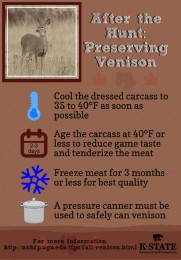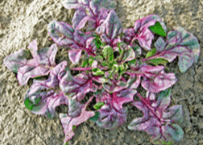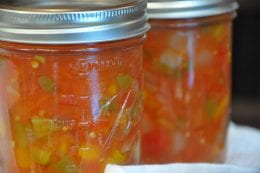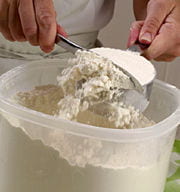 Hunting season is in full swing for a variety of wild game species. Take time to safely handle and preserve wild game to safely provide wholesome and nourishing food for family and friends.
Hunting season is in full swing for a variety of wild game species. Take time to safely handle and preserve wild game to safely provide wholesome and nourishing food for family and friends.
Key factors in keeping field dressed wild game safe are temperature control and preventing cross contamination. Meat is susceptible to foodborne pathogen contamination such as E. coli or Salmonella. This can come from the surroundings, from the gastrointestinal tract, or other handling and transport.
Start with proper equipment when going out hunting. Suggested equipment includes:
- Sharp knives
- Small hatchet
- Several feet of rope or nylon cord
- Rubber bands
- Clean towels or paper towels
- Resealable bags
- Large cooler with lots of ice
- Disposable plastic gloves
- Fresh water
Field dress as soon as possible and chill the carcass quickly with ice or snow. Learn more information at www.rrc.k-state.edu/preservation/canning.html in the Canning Low Acid Foods section.





